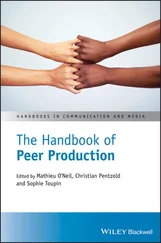3 Bell, M.A. & Wolfe, C.D. (2007). Changes in brain functioning from infancy to early childhood: evidence from EEG power and coherence during working memory tasks. Developmental Neuropsychology, 31, 21–38.
4 Belsky, J. & Pluess, M. (2009). Beyond diathesis stress: differential susceptibility to environmental influences. Psychological Bulletin, 135, 885–908.
5 Bjorklund, D.F. (1997). The role of immaturity in human development. Psychological Bulletin, 122, 153–169.
6 Bjorklund, D.F. (2009). Why Youth Is not Wasted on the Young: Immaturity in Human Development. Hoboken, NJ: John Wiley & Sons.
7 Bogin, B. (1990). The evolution of human childhood. Bioscience, 40, 16–25.
8 Boissy, A. (1995). Fear and fearfulness in animals. The Quarterly Review of Biology, 70, 165–191.
9 Bruch, M.A., Giordano, S., & Pearl, L. (1986). Differences between fearful and self‐conscious shy subtypes in background and current adjustment. Journal of Research in Personality, 20, 172–186.
10 Buss, A.H. (1986a). A theory of shyness. In W.H. Jones, J.M. Cheek, & S.R. Briggs (Eds.), Shyness: Perspectives on Research and Treatment (pp. 39–46). New York: Plenum Press.
11 Buss, A.H. (1986b). Two kinds of shyness. In R. Schwarzer (Ed.), Self‐Related Cognitions in Anxiety and Motivation (pp. 65–75). Hillsdale, NJ: Erlbaum.
12 Buss, D.M. (1999). Evolutionary Psychology: The New Science of Mind. Boston, MA: Allyn and Bacon.
13 Calkins, S.D., Fox, N.A., & Marshall, T.R. (1996). Behavioral and physiological antecedents of inhibited and uninhibited behavior. Child Development, 67, 523–540.
14 Candolin, U. (2003). The use of multiple cues in mate choice. Biological Reviews, 78, 575–595.
15 Caspi, A., Elder, G.H., Jr., & Bem, D.J. (1988). Moving away from the world: life‐course patterns of shy children. Developmental Psychology, 24, 824–831.
16 Castelfranchi, C. & Poggi, I. (1990). Blushing as a discourse: Was Darwin wrong? In W.R. Crozier (Ed.), Shyness and Embarrassment: Perspectives from Social Psychology (pp. 230–251). New York: Cambridge University Press.
17 Clarke, A.R., Barry, R.J., McCarthy, R., & Selikowitz, M. (2001). Age and sex effects in the EEG: development of the normal child. Clinical Neurophysiology, 112, 806–814.
18 Coan, J.A. & Allen, J.J. (2004). Frontal EEG asymmetry as a moderator and mediator of emotion. Biological Psychology, 67, 7–50.
19 Colonnesi, C., Bögels, S.M., de Vente, W., & Majdandžić, M. (2013). What coy smiles say about positive shyness in early infancy. Infancy, 18, 202–220.
20 Colonnesi, C., Napoleone, E., & Bögels, S.M. (2014). Positive and negative expressions of shyness in toddlers: are they related to anxiety in the same way? Journal of Personality and Social Psychology, 106, 624–637.
21 Colonnesi, C., Nikolić, M., de Vente, W., & Bögels, S.M. (2017). Social anxiety symptoms in young children: investigating the interplay of theory of mind and expressions of shyness. Journal of Abnormal Child Psychology, 45, 997–1011.
22 Coplan, R.J., Prakash, K., O'Neil, K., & Armer, M. (2004). Do you “want” to play? Distinguishing between conflicted shyness and social disinterest in early childhood. Developmental Psychology, 40, 244–258.
23 Davidson, R.J. (2000). Affective style, psychopathology, and resilience: brain mechanisms and plasticity. American Psychologist, 55, 1196–1214.
24 Davidson, R.J. & Fox, N.A. (1989). Frontal brain asymmetry predicts infants' response to maternal separation. Journal of Abnormal Psychology, 98, 127–131.
25 Davidson, R.J., Marshall, J.R., Tomarken, A.J., & Henriques, J.B. (2000). While a phobic waits: regional brain electrical and autonomic activity in social phobics during anticipation of public speaking. Biological Psychiatry, 47, 85‐95.
26 Dawson, G.E. & Fischer, K.W. (1994). Human Behavior and the Developing Brain. Guilford Press.
27 Dijk, C., Koenig, B., Ketelaar, T., & de Jong, P.J. (2011). Saved by the blush: being trusted despite defecting. Emotion, 11, 313–319.
28 Dijk, C., Voncken, M.J., & de Jong, P.J. (2009). I blush, therefore I will be judged negatively: Influence of false blush feedback on anticipated others' judgments and facial coloration in high and low blushing‐fearfuls. Behavior Research and Therapy, 47, 541–547.
29 Eggum‐Wilkens, N.D., Lemery‐Chalfant, K., Aksan, N., & Goldsmith, H.H. (2015). Self‐conscious shyness: growth during toddlerhood, strong role of genetics, and no prediction from fearful shyness. Infancy, 20, 160–188.
30 Eggum‐Wilkens, N.D., Reichenberg, R.E., Eisenberg, N., & Spinrad, T.L. (2016). Components of effortful control and their relations to children’s shyness. International Journal of Behavioral Development, 40, 544–554.
31 Eisenberg, N., Fabes, R.A., & Murphy, B.C. (1995). Relations of shyness and low sociability to regulation and emotionality. Journal of Personality and Social Psychology, 68, 505–517.
32 Eisenberg, N., Smith, C.L., Sadovsky, A., & Spinrad, T.L. (2004). Effortful control: relations with emotion regulation, adjustment, and socialization in childhood. In R.F. Baumeister & K.D. Vohs (Eds.), Handbook of Self‐Regulation: Research, Theory, and Applications (pp. 259–282). New York: Guilford Press.
33 Findlay, L.C., Coplan, R.J., & Bowker, A. (2009). Keeping it all inside: shyness, internalizing coping strategies and socio‐emotional adjustment in middle childhood. International Journal of Behavioral Development, 33, 47–54.
34 Fox, N.A. (1991). If it’s not left, it’s right: electroencephalogram asymmetry and the development of emotion. American Psychologist, 46, 863–872.
35 Fox, N.A. (1994). Dynamic cerebral processes underlying emotion regulation. In N.A. Fox (Ed.), The Development of Emotion Regulation: Behavioral and Biological Considerations. Monographs of the Society for Research in Child Development, 59 (2–3, Serial No. 240), 152–166.
36 Fox, N.A. & Davidson, R.J. (1987). Electroencephalogram asymmetry in response to the approach of a stranger and maternal separation in 10‐month‐old infants. Developmental Psychology, 23, 233–240.
37 Fox, N.A., Henderson, H.A., Marshall, P.J., Nichols, K.E., & Ghera, M.M. (2005). Behavioral inhibition: linking biology and behavior within a developmental framework. Annual Review of Psychology, 56, 235–262.
38 Fox, N.A., Henderson, H.A., Rubin, K.H., Calkins, S.D., & Schmidt, L.A. (2001). Continuity and discontinuity of behavioral inhibition and exuberance: Psychophysiological and behavioral influences across the first four years of life. Child Development, 72, 1–21.
39 Fox, N.A., Schmidt, L.A., Calkins, S.D., Rubin, K.H., & Coplan, R.J. (1996). The role of frontal activation in the regulation and dysregulation of social behavior during the preschool years. Development and Psychopathology, 8, 89–102.
40 Gallese, V. (2017). Neoteny and social cognition: a neuroscientific perspective on embodiment. In C. Durt, T. Fuchs, & C. Tewes (Eds.). Embodiment, Enaction, and Culture: Investigating the Constitution of the Shared World (pp. 309–332). Cambridge, MA: The MIT Press.
41 Gilbert, P. (1989). Human Nature and Suffering. Hillsdale, NJ: Lawrence Erlbaum Associates.
42 Gilbert, P. (2001). Evolution and social anxiety: the role of attraction, social competition, and social hierarchies. Psychiatric Clinics of North America, 24, 723–751.
43 Goldsmith, H.H., Reilly, J., Lemery, K., Longley, S., & Prescott, A. (1995). Laboratory Temperament Assessment Battery: Preschool Version. Unpublished manuscript. University of Wisconsin.
44 Gould, S.J. (1977). Ontogeny and Phylogeny. Cambridge, MA: Harvard University Press.
45 Gould, S.J. (2008). A biological homage to Mickey Mouse. Ecotone, 4, 333–340.
46 Graziano, P. A., Reavis, R.D., Keane, S.P., & Calkins, S.D. (2007). The role of emotion regulation in children's early academic success. Journal of School Psychology, 45, 3–19.
Читать дальше




![О Генри - Справочник Гименея [The Handbook of Hymen]](/books/407356/o-genri-spravochnik-gimeneya-the-handbook-of-hymen-thumb.webp)







